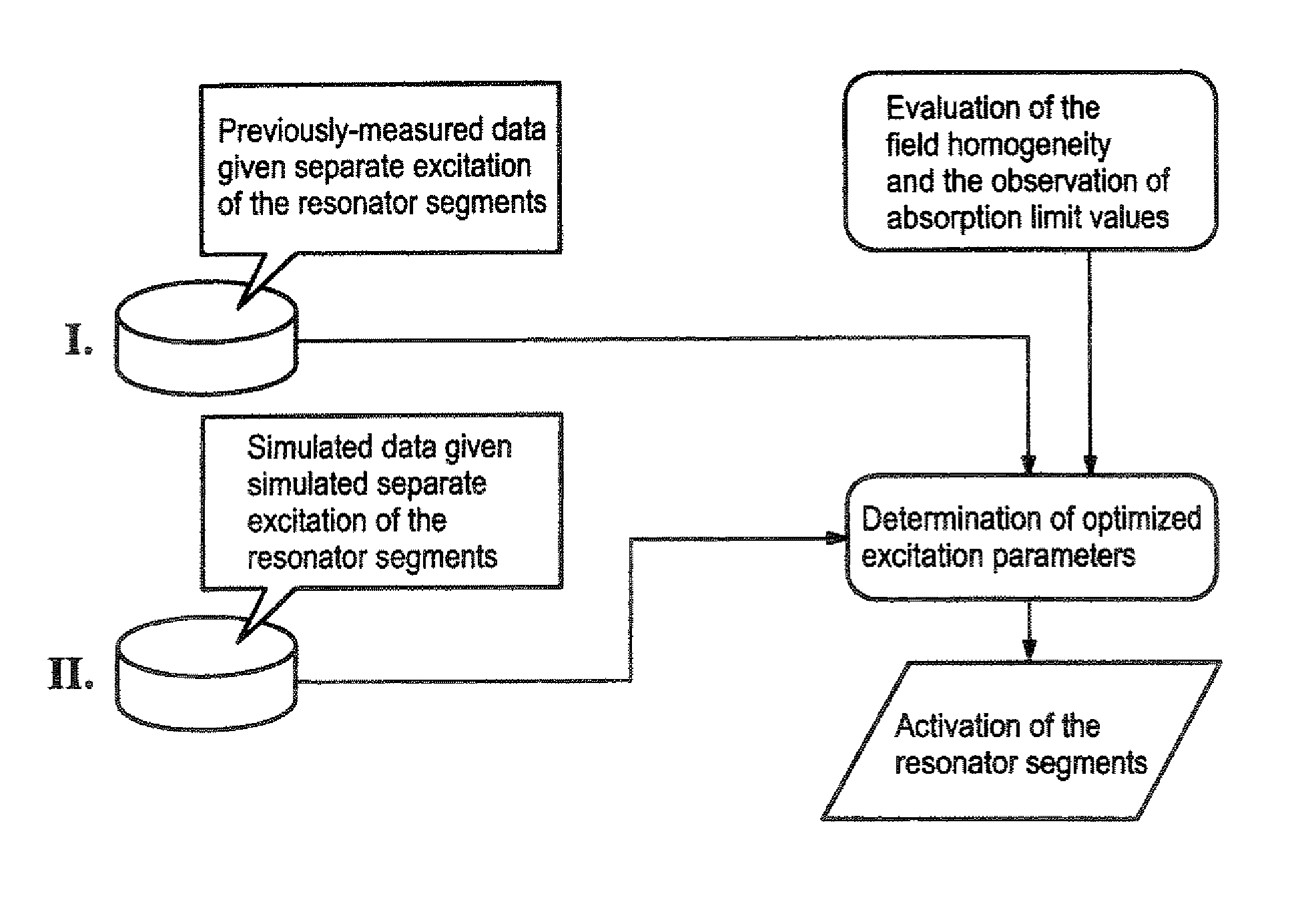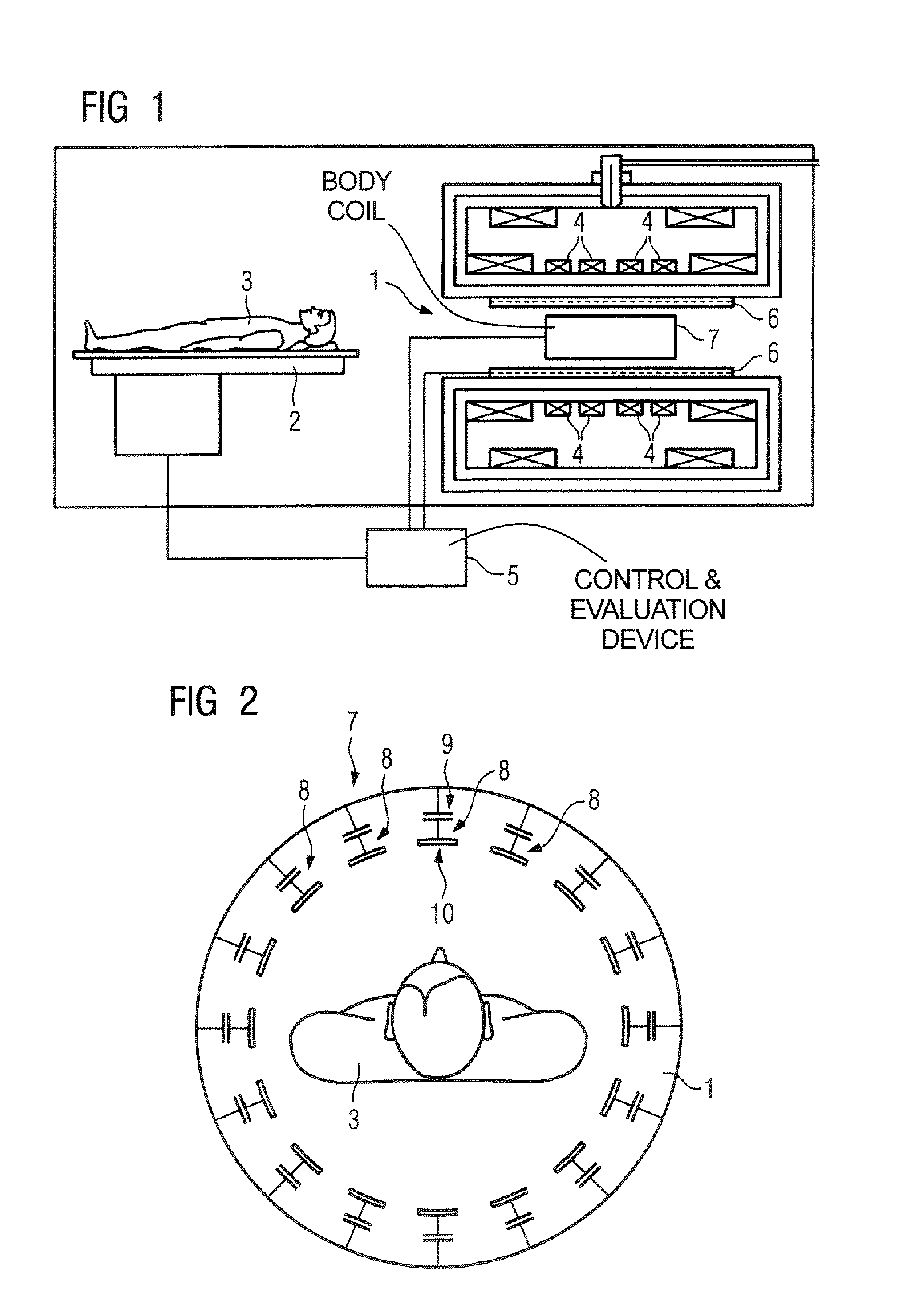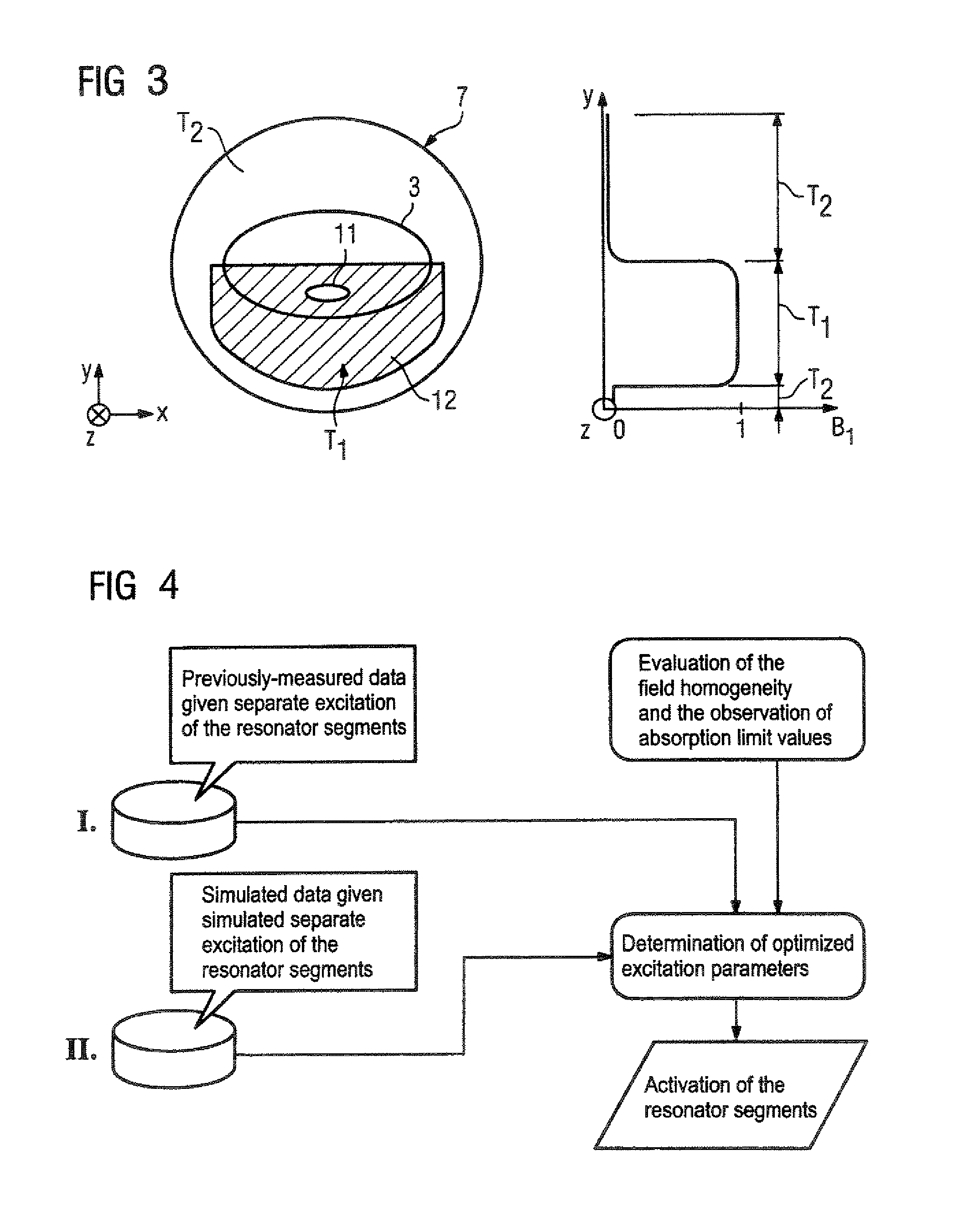Magnetic resonance cylindrical body coil and method for generating a homogeneous RF field
a cylindrical body coil and magnetic resonance technology, applied in the field of magnetic resonance apparatus, can solve the problems of image artifacts, large amount of energy radiated into the patient, time-consuming excitation sequence, etc., and achieve the effect of minimizing field formation, maximum homogeneity, and simple and fast generation
- Summary
- Abstract
- Description
- Claims
- Application Information
AI Technical Summary
Benefits of technology
Problems solved by technology
Method used
Image
Examples
Embodiment Construction
[0029]FIG. 1 shows an inventive magnetic resonance examination system that has an examination region 1. An examination subject 3 (here a person) can be introduced into the examination region 1 by means of a patient bed 2. The examination region 1 that corresponds to the examination volume is charged with a basic magnetic field by means of a basic field magnet 4. The basic magnetic field is temporally constant (static) and spatially as homogeneous as possible. It exhibits a magnetic field strength that is advantageously 3 T or more.
[0030]The basic field magnet 4 can be fashioned as a superconductor. No further activations by a control and evaluation device 5 (via which the system operation is controlled) are thus necessary.
[0031]The magnetic resonance system also has a gradient system 6 by means of which the examination region 1 can be charged with gradient magnetic fields. The gradient system 6 can be activated by the control and evaluation device 5, such that gradient currents flow...
PUM
 Login to View More
Login to View More Abstract
Description
Claims
Application Information
 Login to View More
Login to View More - R&D
- Intellectual Property
- Life Sciences
- Materials
- Tech Scout
- Unparalleled Data Quality
- Higher Quality Content
- 60% Fewer Hallucinations
Browse by: Latest US Patents, China's latest patents, Technical Efficacy Thesaurus, Application Domain, Technology Topic, Popular Technical Reports.
© 2025 PatSnap. All rights reserved.Legal|Privacy policy|Modern Slavery Act Transparency Statement|Sitemap|About US| Contact US: help@patsnap.com



